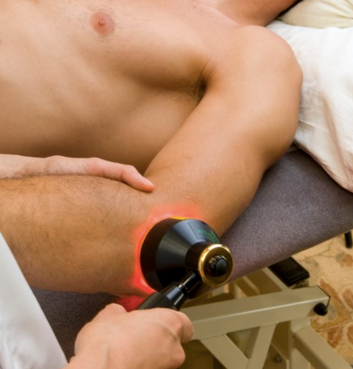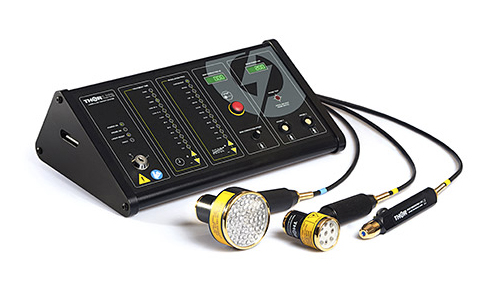Photobiomodulation Therapy.
How does Photobiomodulation
Therapy work?
The effects of PBMT depend on the application of the correct wavelength and the correct density of light delivered to the target tissues for an appropriate period of time (between 30 – 60 seconds). The PBMT devices typically deliver power range of 10mW-500mW and the power density typically ranges from 0.005 W/cm² – 5 W/cm².
What conditions can be treated by Photobiomodulation?

- Neck pain
- Back pain
- Knee pain
- Joint pain
- Osteoarthritis
- Bursitis
- Plantar fasciitis
- Frozen shoulder
- Tennis elbow
- Repetitive stress injuries
- Tendinopathies
- Sporting injuries
- Sprains and strains
- Neuropathic pain
- Degenerative disk disease
Photobiomodulation Therapy represents the first advance in rehabilitation science since the introduction of ultrasound, interferential current, tens, etc. and is rapidly replacing those modalities.
Moreover, it provides treatment alternatives for patients that have not responded to conventional treatments. Generally it obviates the need for pharmaceutical solutions and frequently makes surgical interventions redundant.
Commonly asked questions:
Your will sit or lie comfortably during treatment and provided with safety goggles. The laser or LED probe is applied to the skin over areas, which are treated for 30 or 60 seconds per point.
Comfortable clothing (e.g. shorts, singlet) that will allow you to expose the area you are having treated; imaging (e.g. X-ray, MRI, ultrasound) reports if relevant; a case history form.
The treatment duration is typically around 30 minutes and will depend on the nature and chronicity of your condition and the extent of the pathology involved. Treatment is given 1-2 times a week initially (for 2-3 weeks) depending on the severity of the condition and the area needing treatment.
PBMT treatments can be part of your Myotherapy session(s) or stand alone treatments(s). Your therapist will discuss with you your treatment plan at your initial consultation.
An average course of treatment is between 6 to 8 treatments. An individual’s response to PBMT will vary to some degree. Some people will have fewer treatments and others more depending on the severity of the condition. The more quickly your symptoms improve the fewer treatments are needed and the greater the time between treatments.
Generally, within 3-4 treatments you will start to feel benefit, though some people do report improvement of their symptoms after their first treatment. Whilst every person’s condition is different you will know within a few sessions if PBMT is going to benefit you.
PBMT is non-toxic, non-invasive, pain-free with no significant side effects. Some people experience a slight discomfort around the hairline; some experience a temporary exacerbation of symptoms (usually mild and self-limiting to less than 24 hours post treatment) before they get better due to high sensitivity tissue response.
The contraindications include eyes (laser safety glasses must be worn when the laser is in use), cancer (over any malignant lesions), pregnancy (over the abdomen/developing foetus), thyroid, and photosensitive epilepsy.
Yes, you can claim your PBMT session if it is a part of your myotherapy treatment. No, if it is a stand-alone treatment.


